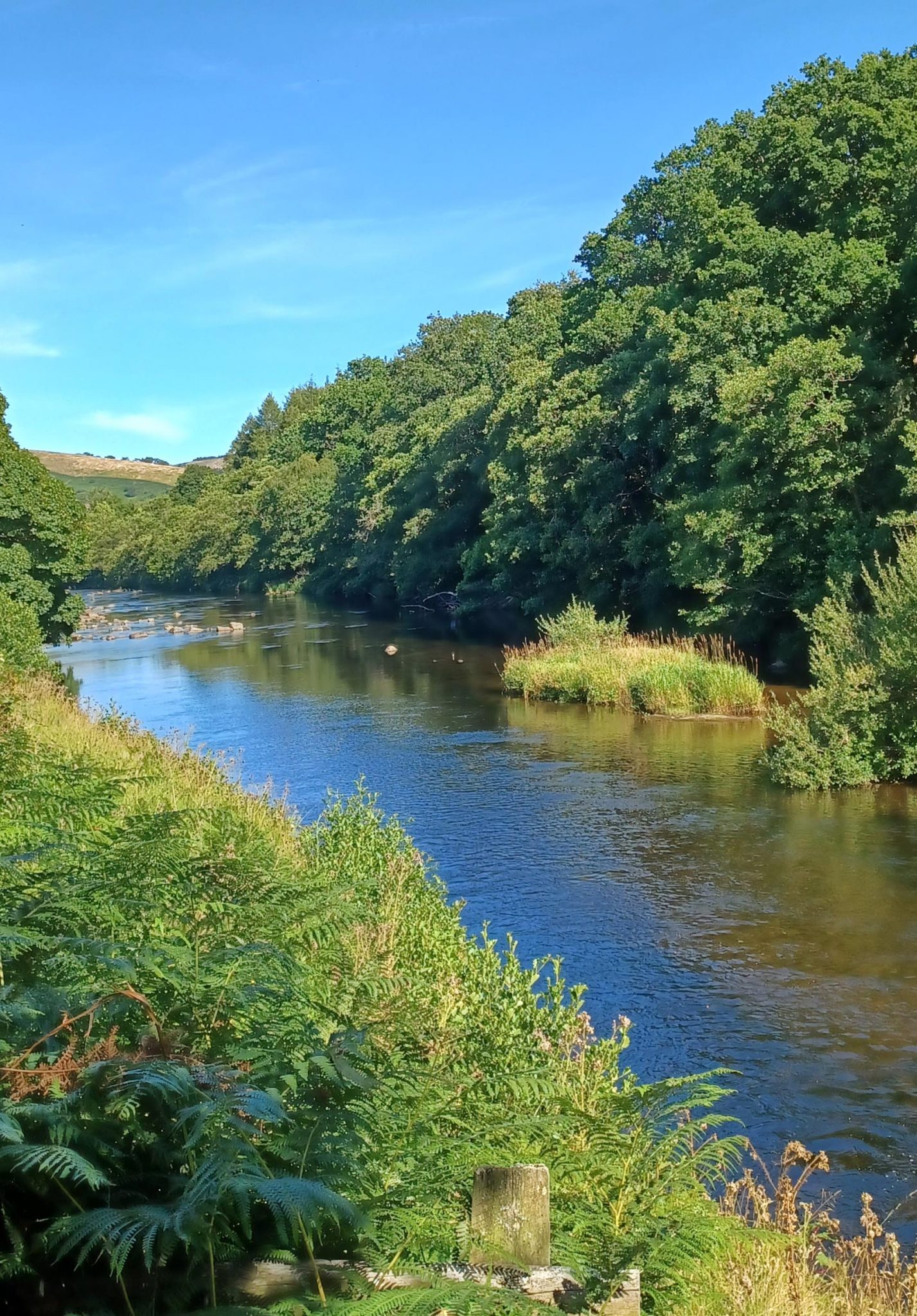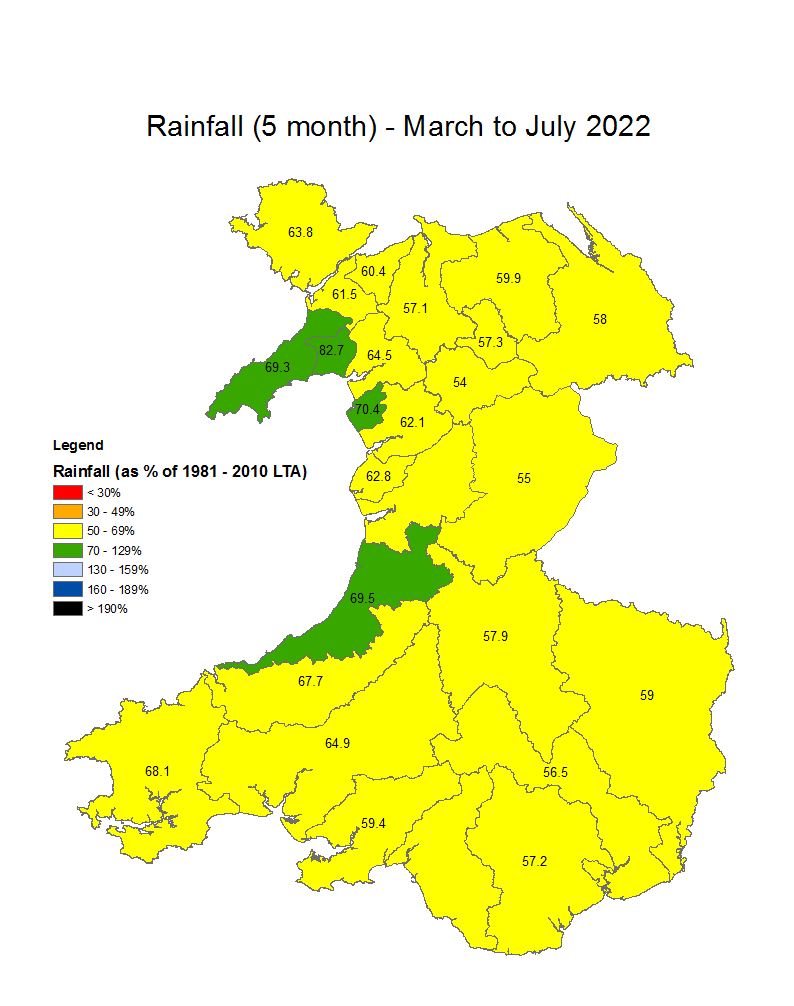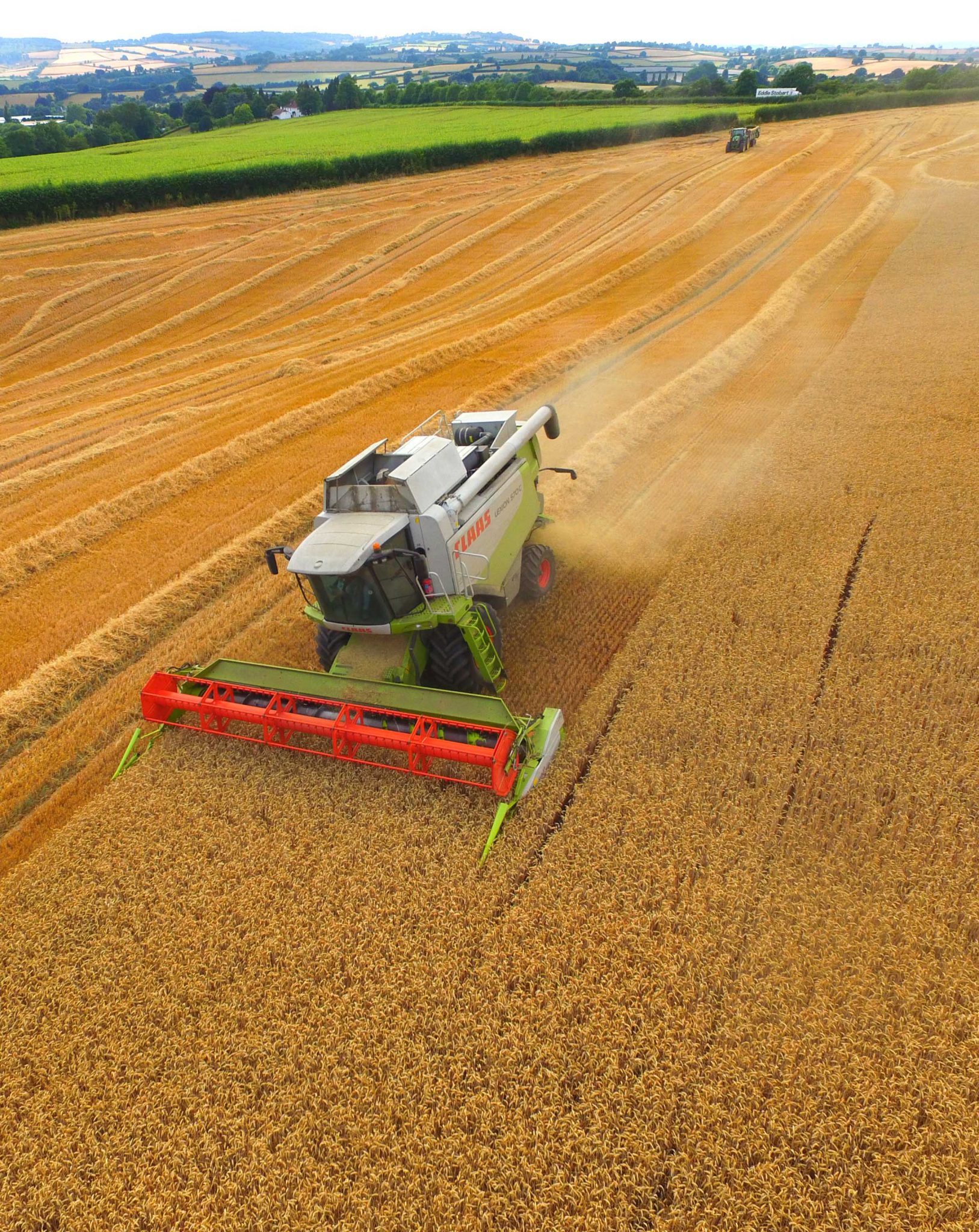While much of Wales is desperate for rain, some rivers are still flowing within their natural range for the time of year, including the upper Wye (photo taken Sunday).
Only 56% of the expected overall rainfall came to Wales in July. This follows a relatively dry spring and early summer, with only 61% of expected cumulative rainfall received since March. Source: Natural Resources Wales.
Of all the UK’s water companies, Hafren Dyfrdwy loses the second highest amount of water.
Low river flows are not just a water company issue. Healthy soils enable a catchment to store huge volumes of water, which can be released slowly into rivers.
Tuesday 9th August, 2022
The prolonged dry conditions have led to domestic water use restrictions in some areas of the UK in August, with many rivers at all-time low flows.
Overall, Wales has been exceptionally dry too. According to Natural Resources Wales, only 56% of the expected rainfall came to us in July. This follows a relatively dry spring and early summer, with only 61% of expected cumulative rainfall received since March.
The rain that arrived in Wales in July and early August was very localised. While some river catchments remained desperate for rain, last week flood alerts were issued on the Conwy and Glaslyn. The Tywi is not yet at critical levels and other rivers in Mid and North Wales are still within their normal range for the time of the year.
Across the UK though, this July was the 3rd driest on record with many other Welsh rivers running “notably to exceptionally low” for the time of year. In South East Wales, sections of the Nant Ffrwd and Nant Twyn Harris were reported to have dried up and the Ebbw at Rhiwderin is at its lowest level ever recorded. Meanwhile, levels in the Frogwy at Bodfordd on Anglesey are also at an all-time low. For those river catchments that did receive some welcome rain, the benefits are likely to be short-lived as we now enter another very dry and hot period.
Some rivers in Wales dried up in early August whereas others have had flood warnings
The situation for West Wales is particularly concerning. The Western Cleddau is currently at its lowest ever recorded level with the Eastern exceptionally low too. Last week, Welsh Water announced a hosepipe ban for that area (commencing on the 19th August) after Pembrokeshire’s water storage dropped into the “Developing Drought” level. Like all water companies, their drought plans define the triggers at which actions will be taken. Welsh Water currently indicate that they expect no extension of a hosepipe ban outside Pembrokeshire but should a long period of low rainfall continue, actions will need to be taken elsewhere in Wales to conserve water and protect the rivers and their important ecology.
Afonydd Cymru and the regional river trusts in Wales are working with Natural Resources Wales to review the use of reservoir releases to help rivers. Such a request from the Wye & Usk Foundation in July led to the Wye receiving extra water to protect salmon during last month’s heatwave. While some fish deaths were still reported, the situation could have been far worse for Wye salmon if the Elan reservoirs had not been used in this way. Reservoir releases, however, need to be managed carefully so that water kept back to protect rivers is not used up too early.
Should our water companies be doing more?
Welsh Water’s actions are in line with those detailed in their Drought Plan, which is agreed with Natural Resources Wales. This started with communications asking their customers to use less in their homes and to consider how they use water in their gardens. We all need to consider that the water we use is abstracted from our rivers or reservoirs, and currently some of our rivers are critically low.
Afonydd Cymru expects Welsh Water to take all steps necessary to protect the environment. This includes enhanced leakage detection and correction, implementing operational changes to use different resources and moving water around Wales to maintain supplies by tankering or by additional pumping. Natural Resources Wales are also required to implement enhanced enforcement to ensure no unpermitted abstraction is taking place and to monitor abstraction by other users in the catchment.
There have also been widespread calls for water companies to fix leaks. In the last two years, both Welsh Water and Hafren Dyfrdwy have exceeded their targets for leakage reduction, the latter by a welcome 6.6%.
The amount of water lost is still too high, however. Much more significant improvements are needed. Welsh Water lost 116 litres per household per day between 2020 and 2021. In the same period, Hafren Dyfrdwy lost 134 litres per household per day, the second highest amount for all UK water companies and nearly as much as the 145 litre daily average consumption per person. (Source: discoverwater.co.uk)
The amount of water lost by water companies in Wales through leaks is too high
Water companies need to plan for future investment to provide the resilience that will protect our rivers as our climate changes. They are currently preparing their business plans that will define the investment for the next five years and their long-term planning to 2050. In the last round of plans major investment in water resources was not deemed necessary. Clearly thought must be given if the increased prevalence of dry weather means there is a need for new schemes. Unlike in England, Wales’s biggest water company is non-profit-making. The cost of any additional infrastructure must therefore either be reflected in customer bills or via money diverted away from other work such as improvements to CSOs.
Protecting river flows also requires wider measures and actions with everyone needing to own their contribution to this problem, not just water companies. This includes changes to Welsh Government policy regarding metering of customers in Wales, potential changes to planning policy encouraging water-efficient new homes and incentivising people to improve their own water efficiency.
Afonydd Cymru has also long challenged the lack of legislation in Wales to protect soils. These have lost much of their permeability in recent decades due to issues such as compaction and declining organic content. A permeable landscape with healthy soils can store huge volumes of water, which can be then released slowly into rivers in dry periods.
Improving soil health does not only just help rivers during drought, it also reduces flood risk in winter and decreases the amount of nutrients entering rivers. New measures in the Sustainable Farming Scheme that provide the incentive to build more water storage infrastructure on farms are also welcome, reducing the need to abstract from rivers in dry periods.
In the meantime, anyone witnessing dead or suffering fish should report this to Natural Resources Wales immediately on 0300 065 3000. We would also ask everyone who uses the river for recreational purposes to think carefully about protecting ecology, especially during these low flows.




